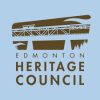
The founders of the Muk-Luk Mardi Gras winter festival were not Indigenous and the name and events typified what we would now consider stereotypical and limited representations of Northern culture [see examples in the photo gallery]. That included ice sculptures and dog team races. The only Indigenous person involved in the inaugural year was James Tegeapak, Inuk, originally from Cambridge Bay, and a patient at the Charles Camsell Hospital at the time. He supervised the building of a large igloo for the site [cf. #1 in gallery]. The initiators of the event were a group of Jaycees, the Junior Chamber of Commerce, who appeared to want a seasonal counterpart to Klondike Days or the Calgary Stampede. The first festival was held from February 22 to 24 in 1963.
Mukluks are soft hide boots designed by Northern peoples for manoeuvrability and warmth in northern environments. The term “mukluk” comes from the (Alaskan Indigenous) Yupik word maklak, meaning bearded seal.
Mardi Gras venues changed each year during its five-year existence, and only a few activities were held in West Edmonton. In the first year, the activities took place at Kinsmen Park – renamed “Polar Park” for the occasion – and offered a toboggan slide, sleigh rides, an ice maze, skating, ice sculptures, and the Muk-Luk Midway with concessions offering buffalo burgers, among other fare, games, and rides; the Exhibition Sportex for dances; the Edmonton Ski Club on Connors Hill; and the Victoria Golf Course for the dog team races [#2 and #3].
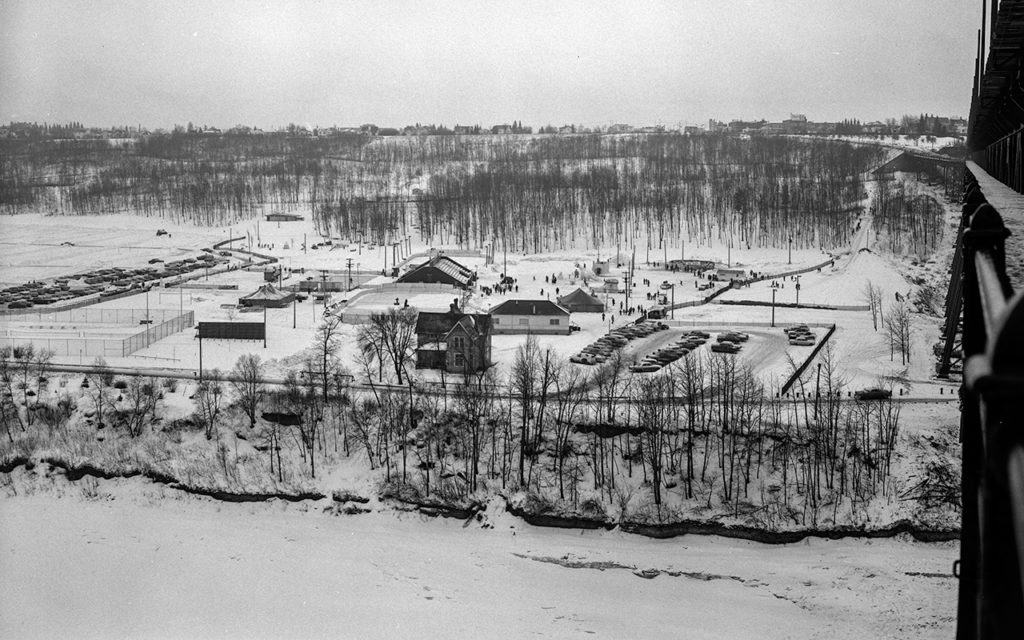
Meanwhile, many community leagues in the Town of Jasper Place sponsored their own winter carnival, often one- or two-day events that always included a contest for Carnival Queen and races, and sometimes figure skating, hockey games and parades. [#4 and #5]
During the colder season, neighbourhoods in Jasper Place began instituting their own respective Winter (or Ice) Carnivals. These popular events were important community-based festivals spearheaded by the area’s Community Leagues. Winter Carnivals in the district began to be held in the early 1940s, if not earlier, beginning in neighbouring Crestwood, and by 1952, both Canora and West Jasper Place had enacted their own Winter Carnivals. Glenwood and Britannia-Youngstown, and other neighbourhoods throughout Jasper Place during the 1950s and 1960s eventually followed. Winter Carnivals featured figure skating performances, hockey tournaments, costume parades, and other entertainment– always concluding with the crowning of a ‘Queen’ of the winter carnival.
Luxton, p. 41
The inaugural Muk-Luk Mardi Gras in 1963 had its share of problems: a major chinook melted everything, and at least three large public events occurring the same weekend in or near the river valley created huge traffic jams. As a result, the Jaycees Planning Committee decided to switch things up for the 1964 version of the festival: they held it earlier in February, from the 7th to the 9th, moved Polar Park from Kinsmen Park to Laurier Park beside the Storyland Valley Zoo, and held a dance at the one-year-old, state-of-the-art Jasper Place Sports Centre. The latter was the suggestion of the Town of Jasper Place, which the Jaycees had approached in an effort to work with community organizations. [#6] All the events from 1963 were retained in 1964, as this article excerpt describes:
“The dog-sled race will be run over a 1 ½-mile course [along] the North Saskatchewan River, which runs through the heart of the city. Along with most other events, it will start and finish at Laurier Park, four miles from downtown Edmonton. The park has been dubbed “Polar Park” for the event. Peter Sangris of Yellowknife, N.W.T. will be on hand to defend his championship in the dog-sled event against nine opponents. Among these will be his brother, Isidore, of Yellowknife, and Bill Carriere of The Pas, Manitoba, all competing for shares in the $1,200 purse. … Carriere’s brother, Roger, will be on hand to compete in a sort of frontier decathlon event that includes moose calling, jigging (a strenuous form of dancing) and racing while carrying a 50-pound sack of flour, among other things.” Calgary Herald, Feb. 7, 1964
Joanne Lethbridge Pompana, who grew up on 149th Street in the 1960s, remembers “skateboarding” on pieces of cardboard down the hill to Laurier Park to participate in Muk-Luk Mardi Gras activities:
There were hay bales put together and there were all kinds of little activities. It was, I’m thinking, in February, and there was hot chocolate. When I grew up in Edmonton it was very community orientated, that west part of Edmonton. I’m thinking most of the kids I was around were all Metis or all Native…. Muk-Luk Mardi Gras was a way of breaking up all that winter, because winters were long, oh man, they were long. Interview, March 11, 2020
The 1964 Moccasin Dance at the Jasper Place Sports Arena attracted 3,500 “gyrating teen-agers” [#7]. Jasper Place High students sculpted penguins in ice for the festival, Ross Shepherd students sculpted their emblem, the Thunderbird, and Victoria Composite carved a polar bear [see below]. The 1964 Muk-Luk Mardi Gras was another resounding success – over 100,000 participated in all – but once again warm weather and traffic congestion created problems.
In response to the traffic problems and limited space at Laurier Park, the venue for the third edition in 1965 was moved again, this time to the south side of the river, west of Whitemud Park [#8]. Mardi Gras was held from February 5th to the 7th. Jasper Place Sports Centre hosted a teen dance on the Friday night featuring Terry Black and the CJCA Nomads, and attracted 3,000 teens [#9]. Besides the usual toboggan runs, sleigh rides, ice statues, moose, duck, and goose calling contests, and, of course, the very popular dog team races, the 1965 program at Polar Park featured Pow Wow dancers from Lac La Biche for the first time [#10].
The 4th annual Muk-Luk Mardi Gras in 1966 was expanded to 10 days, from February 4th to 13th. This edition introduced activities downtown, a folk-jazz festival at the Jubilee Auditorium, and a parade along Whyte Avenue to “Polar Park” that created a rush-hour traffic jam. Polar Park remained on the south side of the river west of Whitemud Creek, and an ice bridge was built from the boat launch at the Edmonton Valley Zoo to Polar Park to accommodate foot traffic, buses, and horse-drawn sleighs [#11]. Jasper Place Composite High School students won third prize in the ice sculpture contest, according to the Edmonton Journal of Feb. 12, 1966.

The very popular Muk-Luk Moccasin Teen dance took place in the Jasper Place Sports Centre on Friday, February 11, 1966, featuring the CJCA Nomads, the CHED Bondsmen, and CBC Music Hop star, Lynda Lane; attendance was 4,000. [#12]. It was the last teen dance for Muk-Luk Mardi Gras in that locale.

Although the Mardi Gras proved to be a popular Edmonton winter festival, it was unsuccessful financially; the 1966 version barely broke even. In November 1966, it was announced that the Jaycees had given a public association the role of organizing a Centennial Year edition. Festivities took place from February 4 to 12, 1967 and, because of better parking and access, the main location moved to the Exhibition Grounds.
Only two events took place in West Edmonton in 1967: Laurier Park was the finish line for a cross-country power toboggan race, and it hosted the high school Native events challenge on the second day, February 5th. The events attracted about 7,000 people, posing parking problems at the Zoo.
In 1968, the final year, almost all events took place at the Exhibition Grounds except for the snowshoe races and the dog sled races held at the Highlands Golf Course. The Muk-Luk Mardi Gras was completely dropped in 1969 and wasn’t revived, despite a few unsuccessful attempts in the early 1980s.
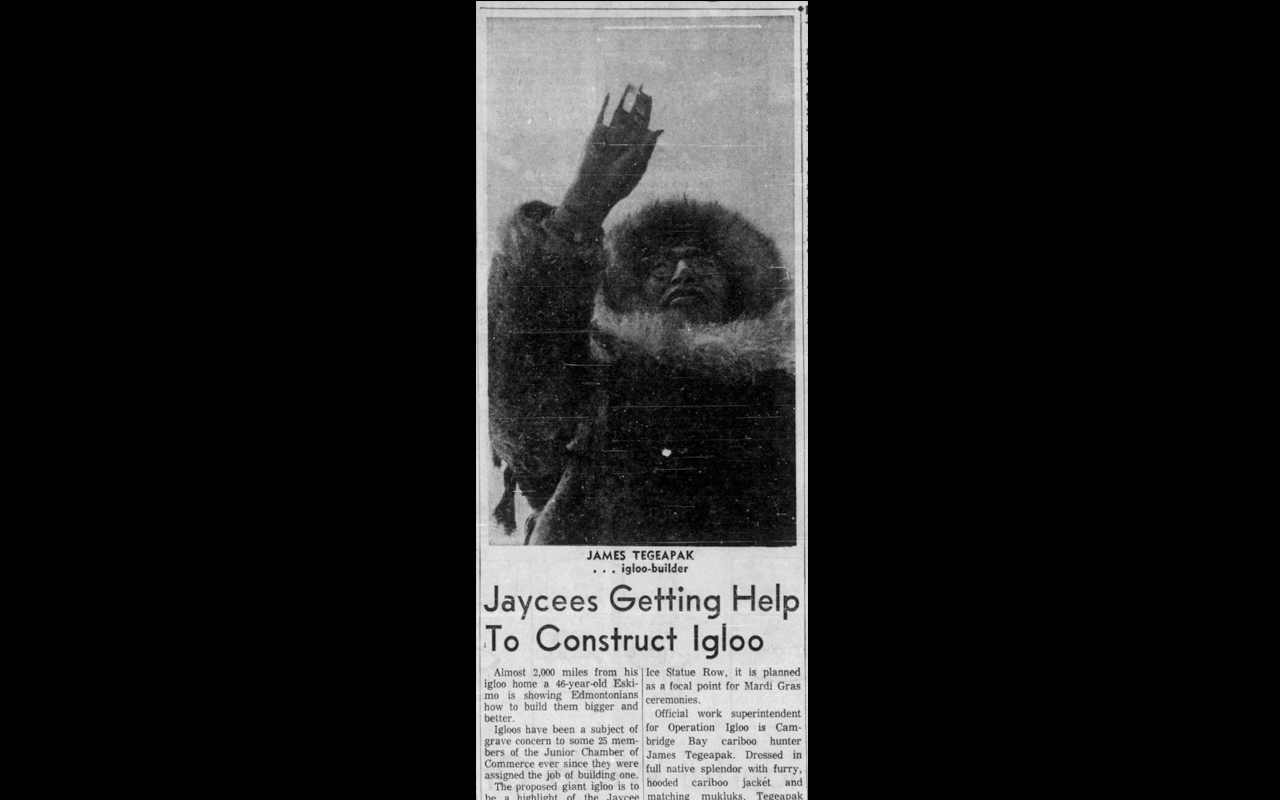 Edmonton Journal, Feb. 13 1963, p. 49, via Newspapers.com
Edmonton Journal, Feb. 13 1963, p. 49, via Newspapers.com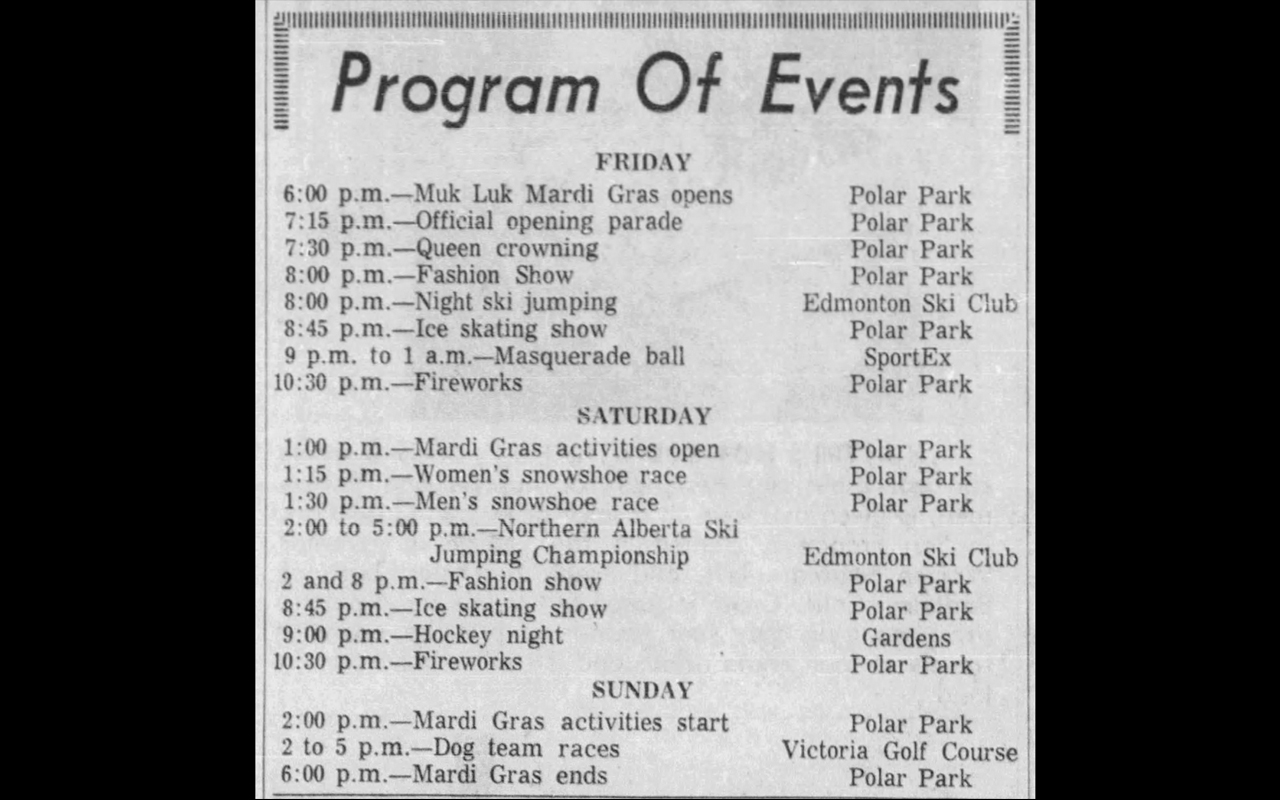 Edmonton Journal, Feb. 21 1963, p. 10, via Newspapers.com
Edmonton Journal, Feb. 21 1963, p. 10, via Newspapers.com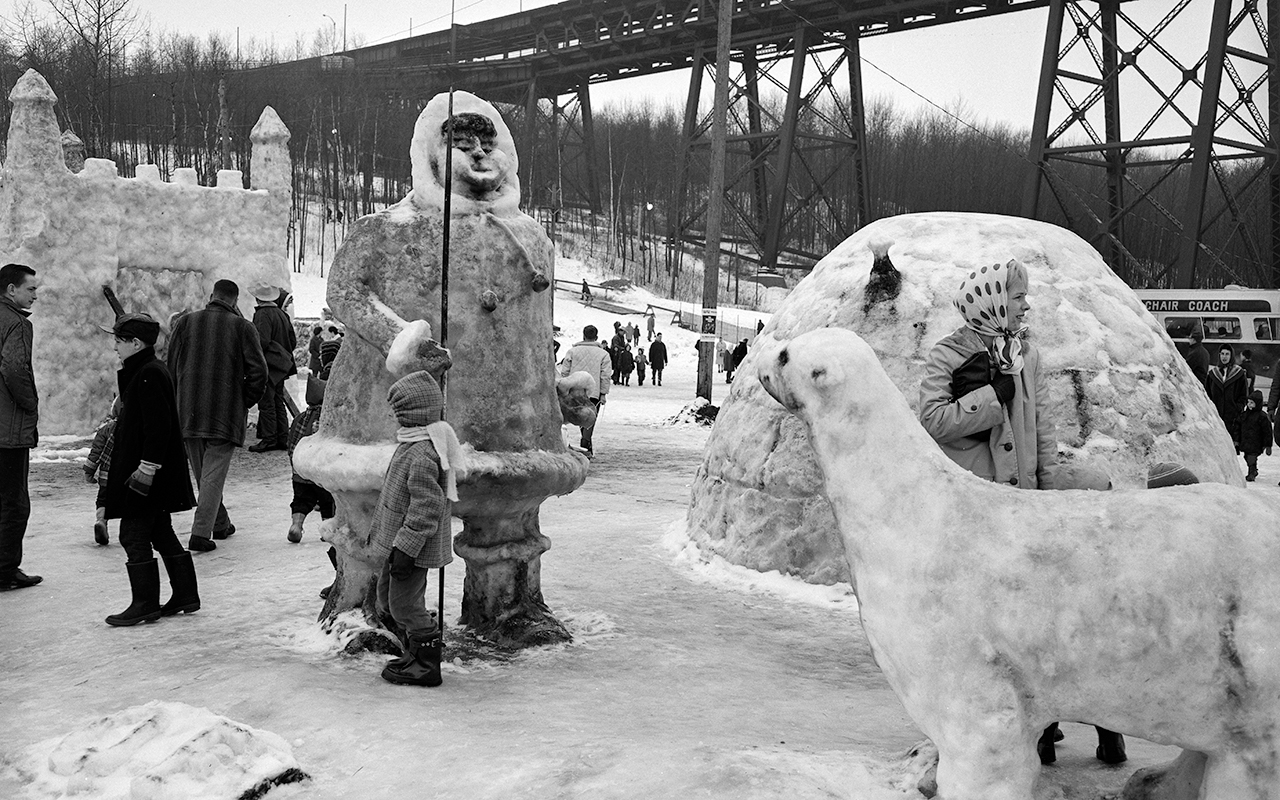 Victoria Park with ice sculptures 1963-64
Victoria Park with ice sculptures 1963-64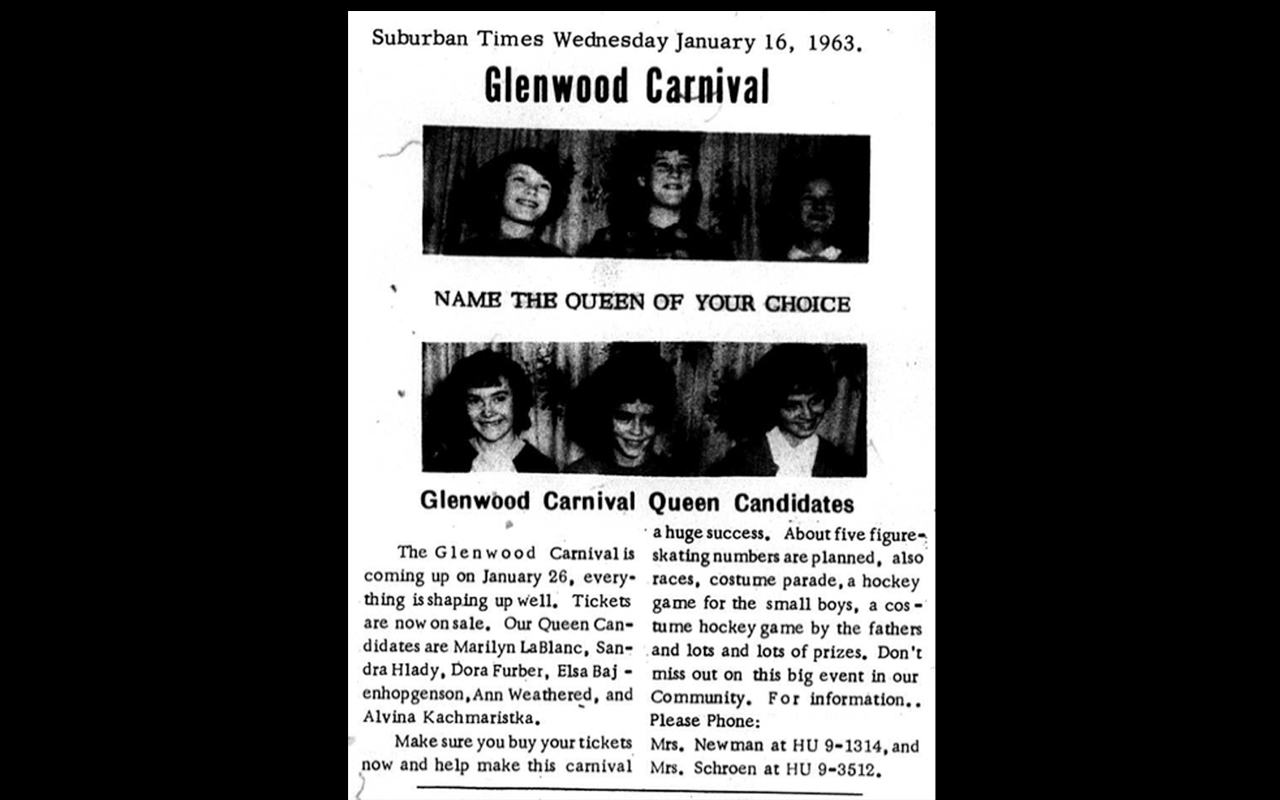 Suburban Times, Jan 16th 1963
Suburban Times, Jan 16th 1963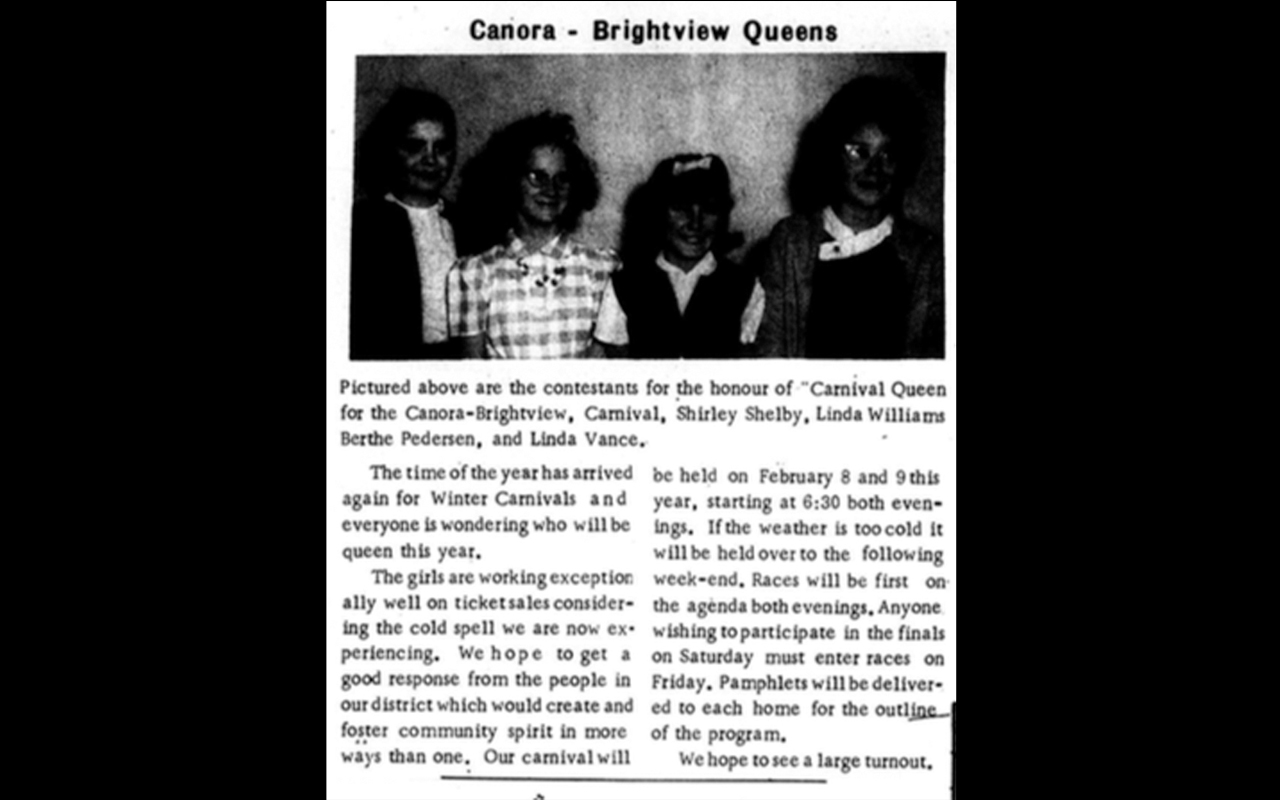 Suburban Times, Jan 30th 1963
Suburban Times, Jan 30th 1963 Edmonton Journal, Feb. 8 1964, p. 25, via Newspapers.com
Edmonton Journal, Feb. 8 1964, p. 25, via Newspapers.com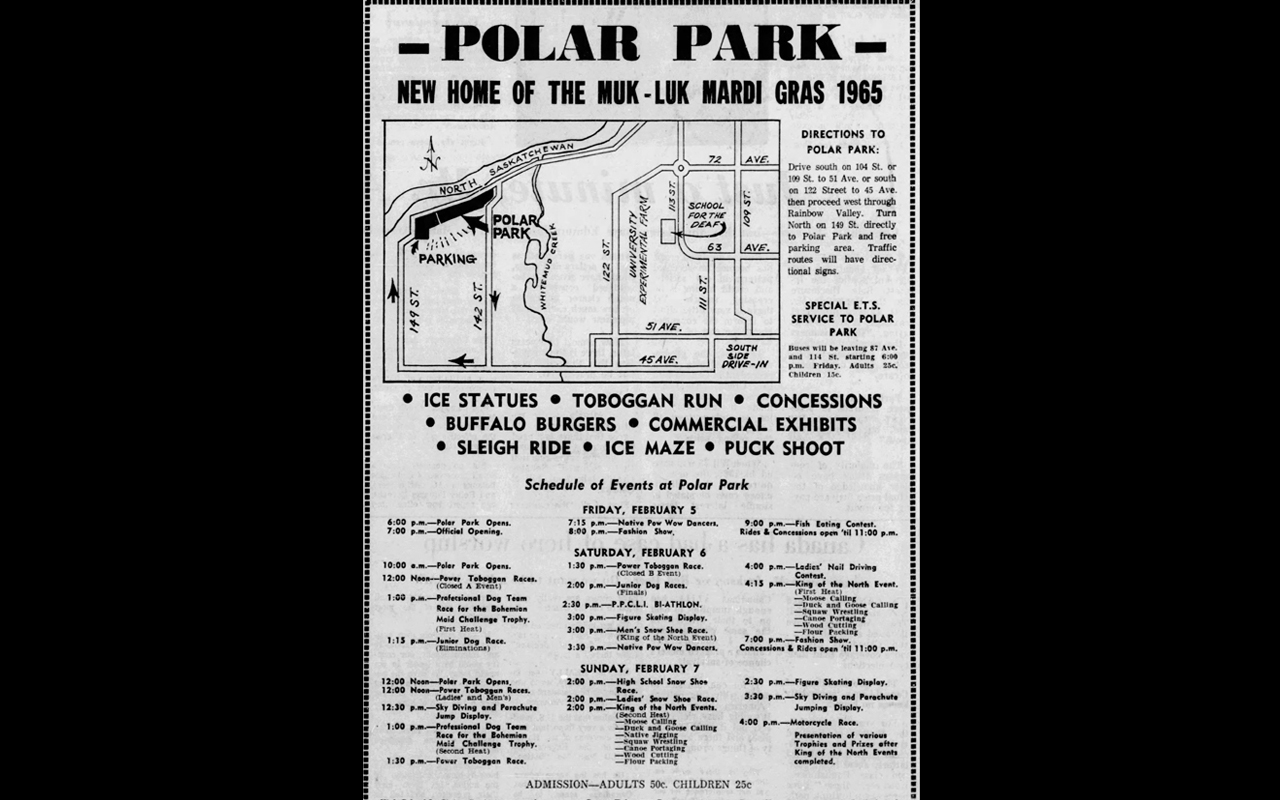 Edmonton Journal, Feb. 4 1965, p. 14, via Newspapers.com
Edmonton Journal, Feb. 4 1965, p. 14, via Newspapers.com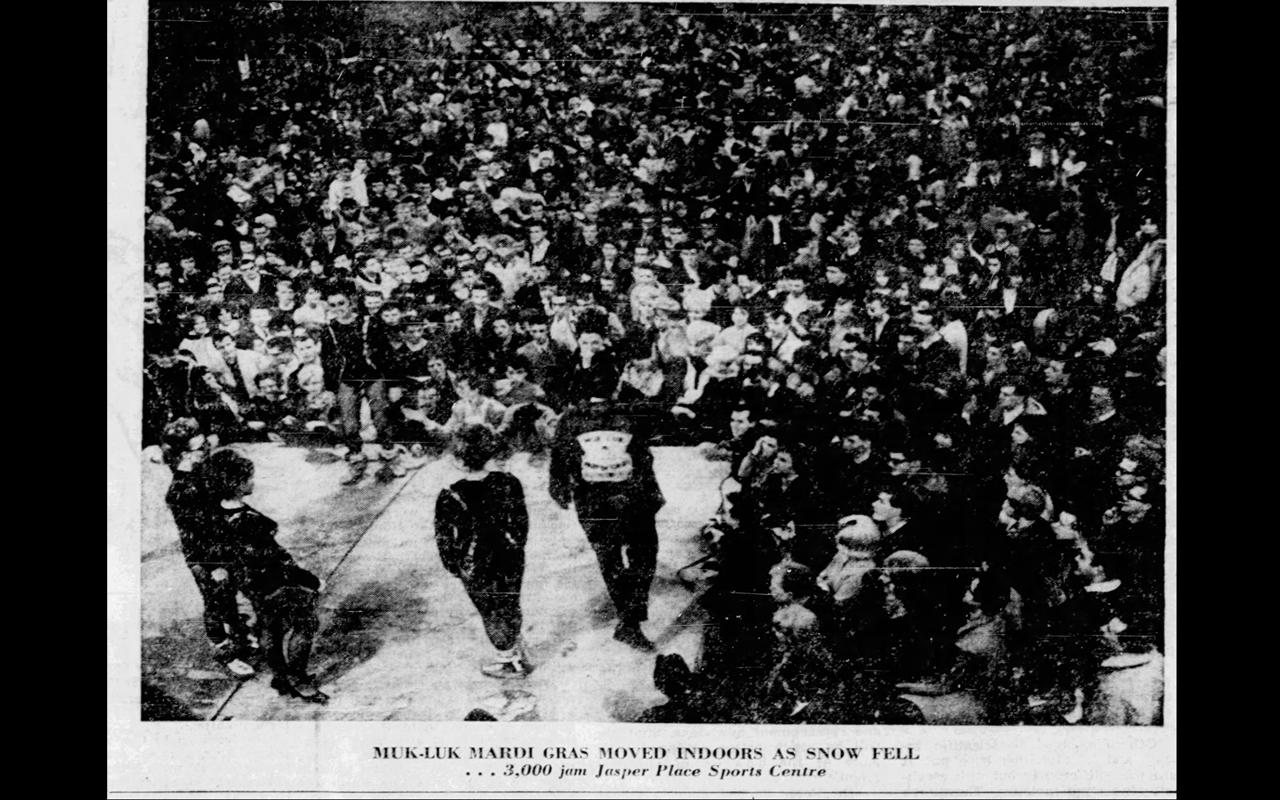 3,000 jam JP Sports Centre during Muk-Luk Mardi Gras. Edmonton Journal, Feb 6 1965, p. 3, via Newspapers.com
3,000 jam JP Sports Centre during Muk-Luk Mardi Gras. Edmonton Journal, Feb 6 1965, p. 3, via Newspapers.com From 1965 Muk-Luk Mardi Gras program. Courtesy of City of Edmonton Clippings files.
From 1965 Muk-Luk Mardi Gras program. Courtesy of City of Edmonton Clippings files. EdmontonJournal, Feb_11, 1966, p. 6, via Newspapers.com
EdmontonJournal, Feb_11, 1966, p. 6, via Newspapers.com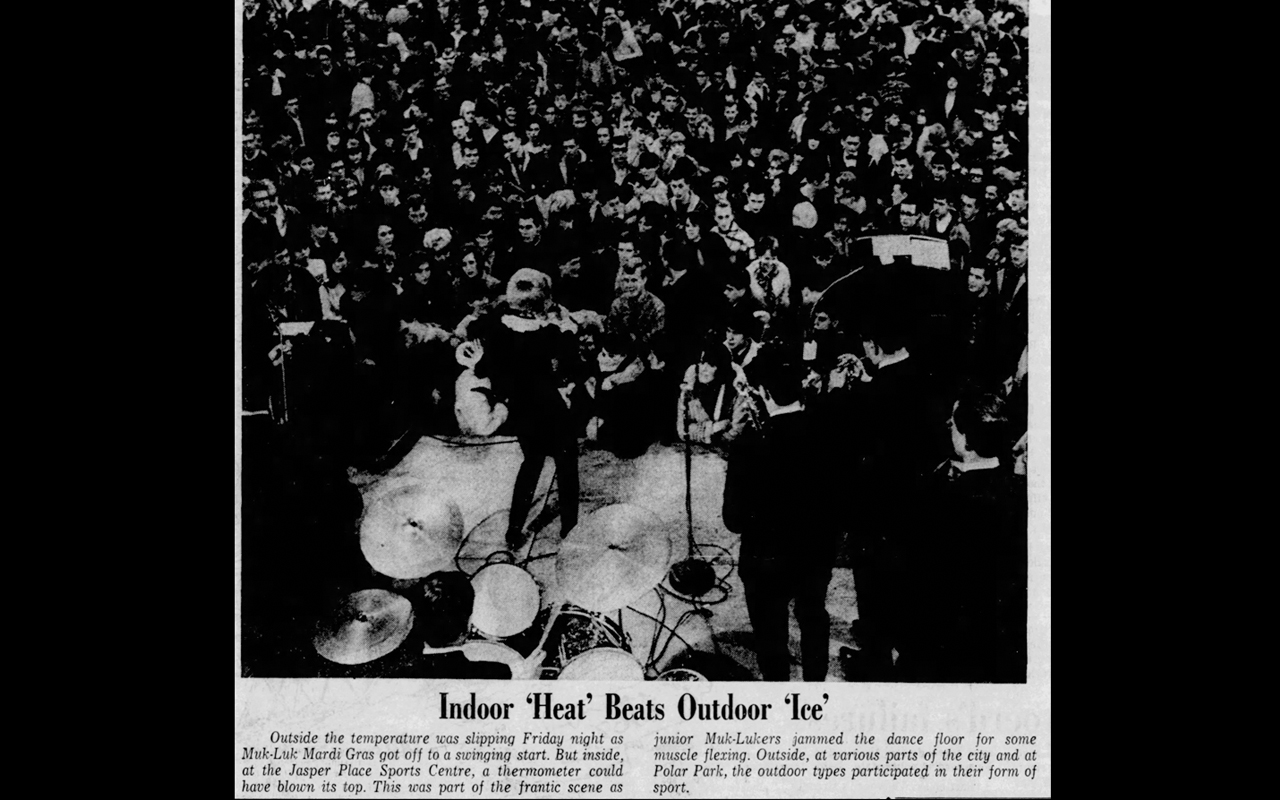 Teen Dance at Jasper Place Sports Centre during Muk-Luk Mardi Gras. Edmonton Journal, Feb. 12 1966, p. 3, via Newspapers.com
Teen Dance at Jasper Place Sports Centre during Muk-Luk Mardi Gras. Edmonton Journal, Feb. 12 1966, p. 3, via Newspapers.com
[This article replaces one which appeared in SPANN in June 2020, which contained factual errors].


